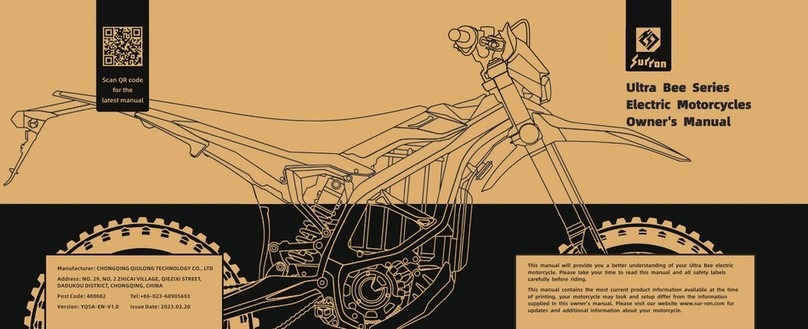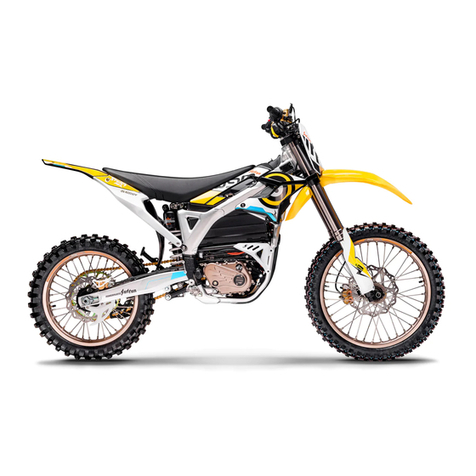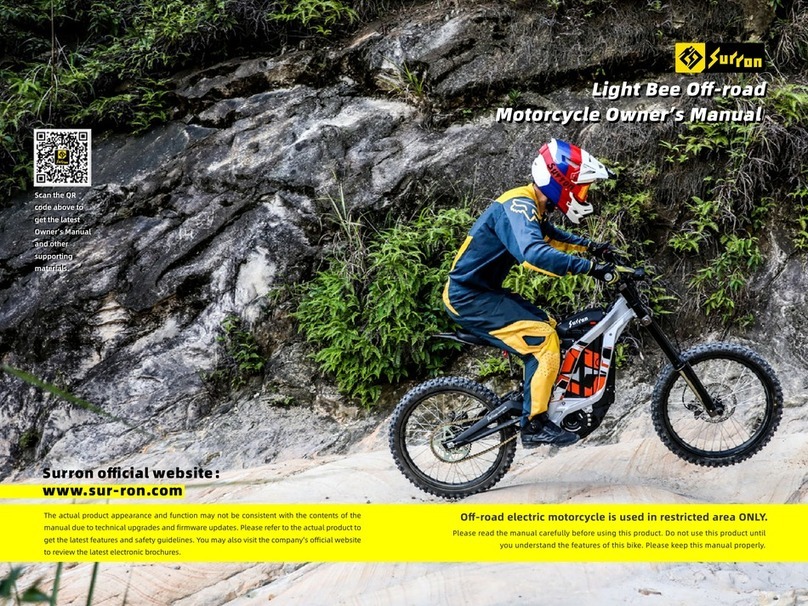
Power management..... 8.1
Battery Pack................................................ ................ 8.1
Power and charging................................. 8.2
Power system management................................................... 9.1
power system........ 9.1
Junction Box....................................... 9.1
Maintenance Your Motorcycle................................. 10.1
Maintenance Items...................................... 10.1
Maintain Records....................................................10.1
Regular Maintenance..................................................... 10.1
Maintenance Plan....................................... ........... 10.1
Torque Management............................................... 10.3
Battery Pack................................................................ 10.5
Braking System..................................................................... 10.5
Suspension system ......................................................... 10.8
Wheels and Tires..................................... ....10.8
Chain................................................ ..................... 10.9
Reduction reduction gearbox oil................................................ ..................... 10.10
Headlight Adjustment ................................................ ................ 10.11
Light Bulb Replacement...............................10.12
Motorcycle Cleaning...................................................... 10.12
Parking and Long-term Storage..................................... 10.13
Electric motorcycle parts................................. 10.14
Fuse......................................................... ........10.14
Whole motorcycle electrical schematic diagram.....................................10.16
Troubleshooting.......................................11.1
Electric Motorcycle Troubleshooting................................................ ......... 11.1
Precautions for hot and cold weather.............................................. 11.1
Safety Interlock............................................11.2
Electric Motorcycle Precautions...................................................... 11.2
System warning message.............................................. ...... 11.3
General troubleshooting...................................................... 11.6
Warranty and after-sales information................................. 12.1
Limited Warranty conditions.................................... .............. 12.1
Sur-Ron Warranty period for sales motorcycles................................................ ................................12.1
Parts Covered by warranty ................................................ ..................... 12.1
Warranty hours.................................... ........... 12.1
Limitations of the limited warranty....................................... ..................... 12.2
Motorcycle owner responsibility................................................. .......12.2































